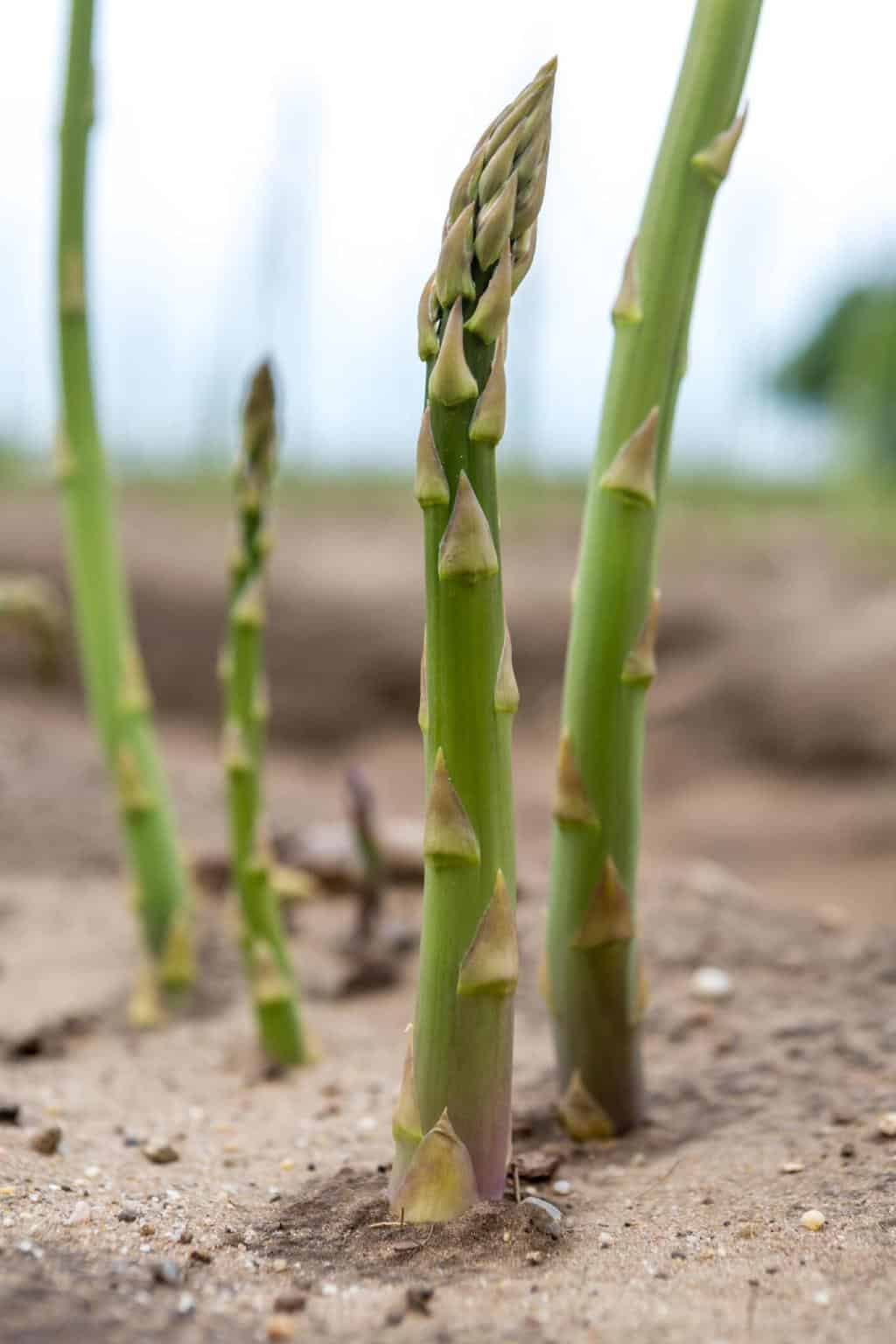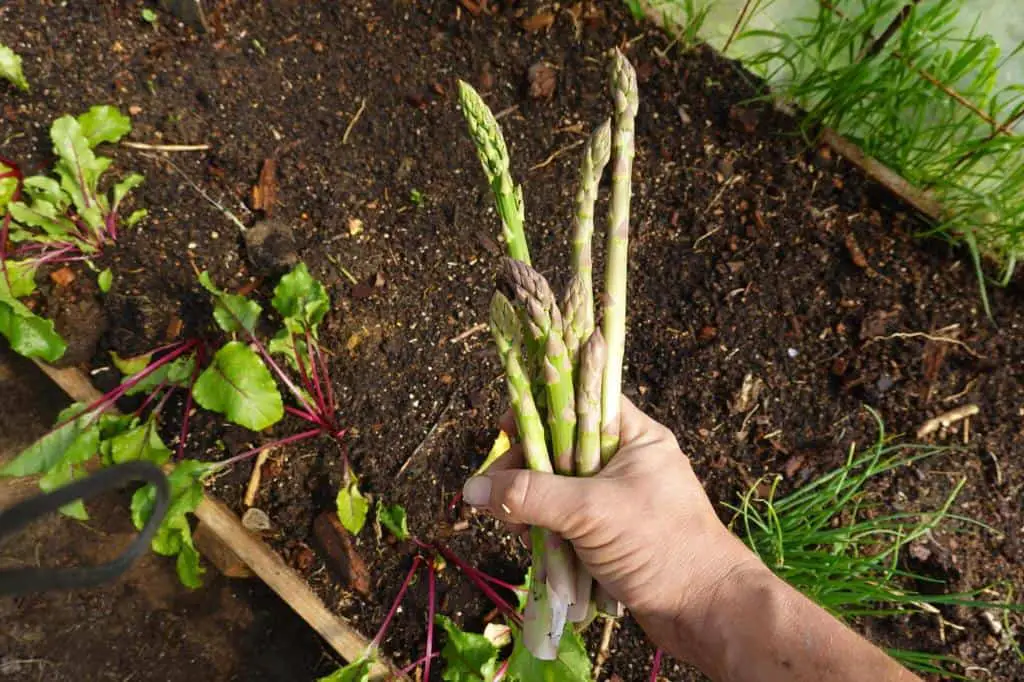Does Asparagus Multiply and Spread on Its Own?

Asparagus is a perennial vegetable cherished for its tender, flavorful spears that herald the arrival of spring. For gardeners, one of the appealing aspects of growing asparagus is its longevity and productivity. A well-tended asparagus bed can yield bountiful harvests for up to 20 years. But a common question arises: does asparagus multiply and spread on its own?
Understanding how asparagus grows and spreads can help you manage your garden better. It can also ensure a steady supply of this wonderful vegetable.
Understanding Asparagus Growth
Asparagus (Asparagus officinalis) grows from underground stems called rhizomes. These rhizomes produce shoots that emerge from the soil as the edible spears we harvest. After the harvest season, the spears grow into tall, fern-like fronds. They make food and store energy in the rhizomes for the next year’s growth.
Natural Multiplication and Spread
Asparagus does have the ability to multiply and spread, but this process is relatively slow and controlled. There are two primary ways asparagus can spread on its own: through its rhizomes and through seeds.
Rhizome Expansion
One way asparagus spreads is through the natural expansion of its rhizomes. As the plant matures, the rhizomes gradually spread out underground, producing new shoots. This growth can form new crowns. They are a few inches from the original planting site. Over time, this can result in a denser asparagus bed.
Key Points:
- Slow Process: The spread of asparagus through rhizome expansion is a slow process, taking several years to noticeably expand.
- Controlled Growth: This kind of spread is controlled and predictable. It is manageable for gardeners.
Seed Production
Another way asparagus can spread is through seed production. Female asparagus plants produce red berries that contain seeds. These seeds can fall to the ground and germinate, leading to the growth of new plants. This type of spread is more random and can lead to new plants popping up in unexpected places.
Key Points:
- Volunteer Seedlings: Seeds can germinate and grow into new plants, known as volunteer seedlings.
- Weed Potential: If not managed, volunteer seedlings can become weedy. They will compete with established plants for nutrients and space.
Managing Asparagus Spread

Natural asparagus multiplication and spread are good. But, they need management to avoid becoming unmanageable. Here are some tips to control and optimize the spread of asparagus in your garden.
Controlling Rhizome Spread
To control the spread of rhizomes, consider the following practices:
- Spacing: When planting new asparagus crowns, space them 12-18 inches apart to allow room for rhizome expansion without overcrowding.
- Barriers: Install underground barriers around the asparagus bed to limit the spread of rhizomes and keep the plants contained within a designated area.
- Regular Maintenance: Regularly inspect the edges of your asparagus bed and trim back any rhizomes that are spreading too far beyond the desired boundaries.
Managing Seed Production in Asparagus
If you have female plants and want to control the spread of seeds, consider these strategies:
- Harvesting: Harvest the spears regularly during the harvest season to prevent them from growing into fronds and producing berries.
- Pruning: If berries do form, prune and remove the fronds before the berries mature and drop seeds.
- Mulching: Mulching is key. Put a thick layer of mulch around your asparagus plants. It stops new seeds from growing and lowers the chance of seedlings.
Benefits of Controlled Asparagus Spread
By managing the spread of asparagus in your garden, you can enjoy several benefits:
- Increased Yield: Controlled spread can lead to a denser asparagus bed, increasing your overall yield over time.
- Healthy Plants: Preventing overcrowding ensures each plant has enough nutrients, water, and light. This promotes healthier growth.
- Garden Aesthetics: An organized asparagus bed improves your garden’s look. It also makes it easier to manage.
Propagating Asparagus Intentionally
You can let asparagus spread naturally. Or, you can also propagate it on purpose. This will expand your asparagus bed more quickly and efficiently. Here are some methods for intentional propagation:
Division
Dividing established asparagus crowns is an effective way to propagate new plants. This method is best done in early spring before new growth begins.
- Digging Up Crowns: Carefully dig up the established crowns, being mindful of the rhizomes and roots.
- Dividing: Use a sharp knife to divide the crowns into sections, ensuring each section has several healthy buds and roots.
- Replanting: Replant the divided sections. Put them in prepared soil and space them properly.
Starting from Seed
Another option is to start asparagus from seed. But, it takes more time and patience than crown division.
- Sowing Seeds: Sow asparagus seeds indoors 12-14 weeks before the last frost date. Use a seed-starting mix and provide consistent moisture and warmth.
- Transplanting Seedlings: Move the seedlings to the garden after the danger of frost has passed. Space them 12-18 inches apart.
- First-Year Care: Care in the first year is key. Let the seedlings establish strong roots by avoiding heavy harvesting.
| Also read: Growing Asparagus in Raised Beds |
Comparing Propagation Methods
| Method | Advantages | Disadvantages |
| Natural Spread | Low maintenance, gradual expansion | Unpredictable, can lead to overcrowding |
| Division | Quick expansion, controlled placement | Labor-intensive, potential root damage |
| Starting from Seed | Cost-effective, large-scale propagation | Time-consuming, longer time to maturity |
Can You Dig Up Asparagus and Replant?
Yes, it is possible to dig up asparagus and replant it. This process, known as transplanting, is a common method for maintaining healthy asparagus plants and increasing their yield. Transplanting asparagus can be done in the fall, when the plants are dormant, which allows the roots to heal and establish themselves before the next growing season
Conclusion
Asparagus does multiply and spread on its own, both through rhizome expansion and seed production. Understanding these processes lets you manage your asparagus bed well. It ensures a healthy and productive garden. You can control the spread of rhizomes and seed production. Doing so lets you enjoy a thriving asparagus bed without overcrowding and competition.
Also, intentional propagation methods offer opportunities to expand your asparagus bed faster. These methods include crown division and starting from seed.
With the right care and management, asparagus can be a rewarding and long-lasting addition to your garden. It provides delicious and nutritious spears year after year. You can let nature take its course or take a more hands-on approach. But, understanding how asparagus multiplies and spreads will help you make the most of this useful vegetable.






